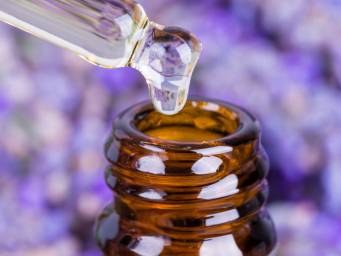How to Eliminate Mold From Every Home Surface area
Mold spores are everywhere around us in every kind of climate. Mold is fungi and some types are very helpful to mankind (think about penicillin), while others can be rather hazardous to crops, respiratory systems, and the stability of structures. Unsafe Mold vs. Mildew The most typical type of mold found in homes is mildew.
Mildew is a surface mold that grows in warm, moist places like your restroom and on materials and books kept in wet basements. Mildew begins as a gray or white powdery colony. It will turn black or brown if not removed without delay and frequently looks like soil build-up. To evaluate if the surface is covered with mildew or just dirt, dab the stain with a cotton bud dipped in household chlorine bleach. If the stain lightens or vanishes after two or three minutes, it's mildew. If not, it's most likely just dirt. If you identify a moldy smell throughout your house, then you have a high concentration of mold. It can be originating from an obstruct filled with moist towels, from a moist crawlspace under your home, or carpets that have mold growing in the padding. It's definitely time to do something about it to get rid of the problem. Now you understand that all mildew is mold however not all molds are mildew.
Mildew can discolor and gradually harm surface areas but there are a lot more harmful molds that can damage the structure of your house. If you see a black or green mold that is fuzzy or slimy and the drywall or wood underneath is soft or falls apart, there is free mold testing near me irreversible rot and the mold and the broken surface areas should be gotten rid of instantly.
Working with Specialists If mildew infestation is captured early, you can quickly handle it with home cleaners.
Warning For substantial mold issues, consider employing a professional. Some molds are highly harmful and even less hazardous molds can trigger problems for anyone with mold allergies or compromised breathing systems. The rule of thumb is if the mold covers 10 or more square feet, call in a professional. Getting rid of big mold colonies requires direct exposure to durable chemicals and proper disposal of infested building products.
Regional public health departments can provide suggestions on mold testing and refer you to a professional mold eliminator.
Products That Kill Mold Chlorine bleach: Sodium hypochlorite or routine household bleach works best to destroy mold and eliminate any staining. It is quite severe and need to be diluted before using.
Warning Caution need to be utilized due to toxicity and hazardous fumes and bleach needs to never ever be integrated with ammonia.
Hydrogen peroxide: Less harsh than chlorine bleach, hydrogen peroxide (3 to 10 percent solution) will kill mold and lighten stains. While it does have a lightening impact, it works more gradually than chlorine bleach but has no poisonous fumes or residue.
Distilled white vinegar: Vinegar is acidic and slowly breaks down the structure of mold and eliminates it. Vinegar is non-toxic but mold discolorations may remain and additional scrubbing with a household cleaner may be required.

Baking soda and borax: Salt bicarbonate (baking soda) and borax each have a high pH that hinders the growth and survival of mold. Both items are low-cost, non-toxic, and easy to combine with water. Borax will work much better in getting rid of any remaining spots however not as successfully as a stronger cleaning item. When utilizing any of these products, do not wash away the cleansing solution totally. Leaving a little the cleaner will help prevent future mold development.
Removal from Material If your house has actually been flooded and mold and bacteria have actually been delegated grow for numerous days, it might be impossible to restore material items. If mildew has actually developed due to dampness and is caught early, it can quickly be removed from most materials. Begin by taking the items outside to brush away as much surface mold as possible and to avoid spreading out the mold spores inside your home. If the fabric is washable, utilize the hottest water advised on the care label and add a disinfectant. If spots remain, produce a solution of oxygen bleach and water and allow the clothing to soak for a minimum of 8 hours.
Oxygen bleach can be used safely on any washable material. For fabrics that are dry tidy only, brush away the mildew outside and after that head to a professional cleaner. Determine and explain the discolorations and a lot of materials can be effectively restored.
Leather Shoes, Coats, Add-on, and Furniture Mold on leather coats, shoes, purses, and furnishings needs to be gotten rid of outside, if possible. Wipe down the surface with a cloth dipped in distilled white vinegar and after that with a good leather soap and warm water. Dry with a soft cloth and enable to air dry completely. Once completely dry, deal with the item with a leather conditioner.
Books and Documents Mold will ultimately ruin paper however it can be successfully eliminated. For costly books and historically substantial papers, seek advice from an expert manager. Never ever attempt to treat moist paper. The mold will smear and end up being almost impossible to remove. Allow the paper in books to air dry completely in the sun or place in a sealed container with moisture absorbent material like silica gel or cornstarch sprinkled between the pages. When the book is dry, head outside and use a soft paintbrush or cloth to gently brush away the mildew from the cover and each page. Slide a sheet of waxed paper under http://query.nytimes.com/search/sitesearch/?action=click&contentCollection®ion=TopBar&WT.nav=searchWidget&module=SearchSubmit&pgtype=Homepage#/Mold inspection each page to protect the page behind it. A little dampen a tidy, soft fabric with hydrogen peroxide and gently wipe down each page allowing it to air dry totally before moving to the next page.